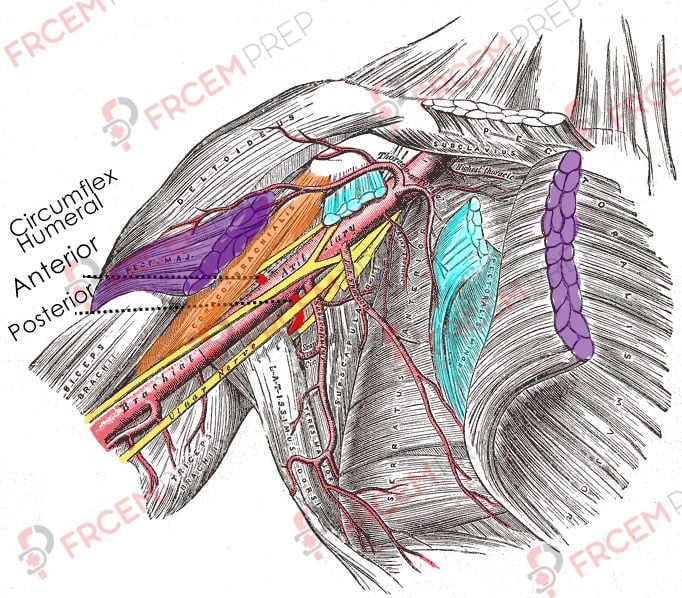Appreciation that the axilla transmits the neurovascular bundle from the neck to the upper limb Axillary artery as a source of the blood supply to the circumflex humeral arteries. Detailed knowledge of the branches of the axillary artery NOT required
Curriculum
Axilla is a well protected region on 3 sides – Superiorly, Laterally and Medially, and it hosts the important neurovascular bundle of Upper limb. It’s like a bridge between the neck and upper limb. The contents are prone to injury in trauma if Axilla is involved or if the arm gets pulled too much.
The Axillary artery gives some branches in the Axilla but the most notable ones are the “Anterior and Posterior Circumflex humeral arteries”.
The Anterior circumflex supplies the Head of Humerus and Shoulder joint.
The Posterior circumflex also supplies the Shoulder joint. It travels along the surgical neck of Humerus and anastomoses with Anterior circumflex laterally.

Modified from Henry Gray (1918) Anatomy of the Human Body Gray’s Anatomy, Plate 523, Public Domain
Image shows both circumflex arteries in Red.
The Axillary artery is becoming brachial artery.
Ulnar nerve is medial to Brachial artery. Median Nerve is going medial to lateral on Brachial artery. Musculocutaneous nerve is seen lateral to Axillary artery.
Muscles shown –
- Orange – Coracobrachialis
- Purple – Pectoralis major (cut)
- Cyan – Pectoralis minor (cut)
The posterior circumflex humeral artery and the axillary nerve may be injured in proximal humerus fractures (One of the common sites).
Clinical pearl
Axillary artery is divided into 3 parts relative to Pectoralis Minor (1-Before | 2-behind | 3-After). But detailed parts and their branches is not a required knowledge as per RCEM curriculum.
The Axillary nerve and other derivatives of Brachial plexus that supply the axilla and upper arm all pass through the Axilla.